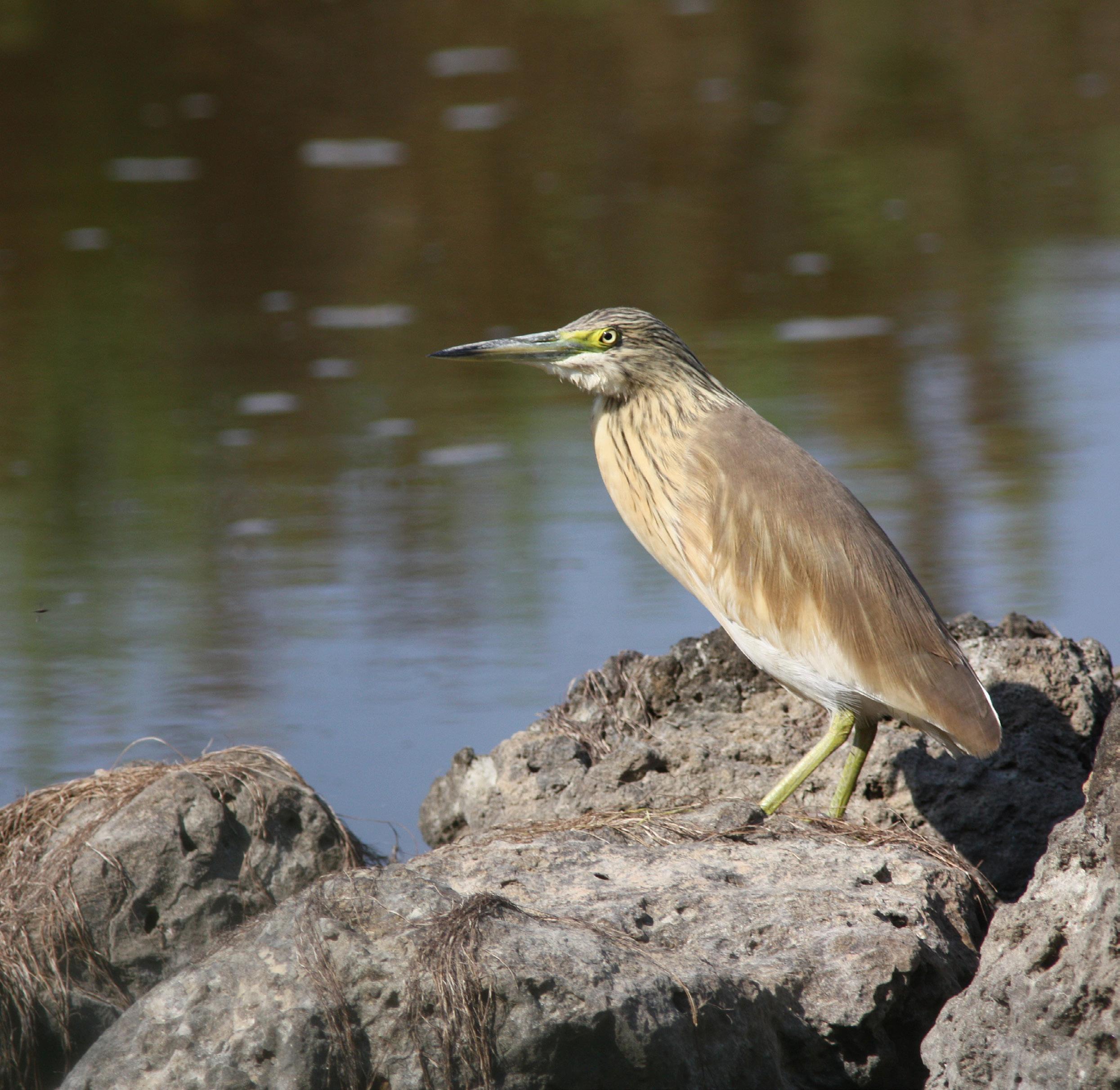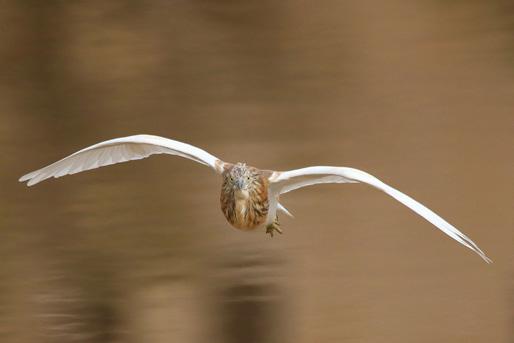
2 minute read
Squacco Heron
MALTESE NAME: Agrett Isfar SCIENTIFIC NAME: Ardeola ralloides LENGTH: 40–49 cm WINGSPAN: 71–86 cm CONSERVATION STATUS: Least concern LOCAL STATUS: Regular spring and autumn migrant CALL: A hoarse croaking ‘kaahk’ BEHAVIOUR: Mostly a shy bird, but also hunts in the open HABITAT: Reed marshes and freshwater habitats, both natural and man-made

Advertisement

The Squacco Heron is one of the smallest members of the heron family. It is a stocky bird with a long bill, short neck and legs. On the ground, the bird blends very well with the surroundings due to its buff brown breast and back, but in flight it totally transforms due to its striking pure white wings and tail. As with most other birds, the adult plumage changes during the breeding season . The breast and back turn from buff brown into a peachy-pink colour, its cream-coloured head attains fine black streaks and long white and black-edged plumes appear on the hindneck. These plumes are synonymous with herons and egrets during the breeding season. The bill also takes a conspicuous bluish colour with a black tip.
In Europe, the Squacco Heron’s breeding range is restricted to the south since it prefers warmer climates. Its breeding habitat are marshy wetlands, along rivers and wet grasslands. The birds nest in small colonies, ocassionally with mixed species of herons and egrets. The nest is made up mostly of sticks in the form of a well-constructed platform, usually placed less than two metres high near or over water. Three to four green-blue eggs are laid. The eggs are incubated mostly by the female for 22–24 days, but the chicks are fed by both parents. The young herons begin to clamber from the nest into nearby branches after 14 days. They will be able to fly at 30 days, and are fully fledged and independent after 45 days.
The Squacco Heron is normally crepuscular, that is, it is mostly active at dusk and dawn, when light levels are low. But in our nature reserves it has been observed feeding also during the day. Its diet is mostly larval insects, small fish, amphibians and insects such as grasshoppers and beetles. The Squacco Herons we see in Malta are from Palearctic populations that migrate south to African sub-Saharan countries in autumn and return to their breeding grounds in spring. The best months to observe Squacco Heron are from April till late May and from August till October, although sightings also occur in other months. It is often seen singly or in small flocks, and occasionally migrates with other flocks of herons and egrets. The best places to observe this heron in Malta are BirdLife Malta’s reserves at Għadira, Simar and Salina. Occasionally it is seen along the coast, flying low over the water and settling on the rocky foreshore. Some individuals use the nature reserves as a stopover, staying for several days to rest and refuel before continuing their migration.
The greatest threats to this species are the loss and degradation of its natural and man-made freshwater habitats and wet woodlands. This degradation has been the cause of various population declines. On the plus side is the species’ adoption of rice fields as feeding and breeding sites, especially when these are near wooded areas. This phenomenon has been mainly responsible for range and population increases.

Mario V Gauci Mario V Gauci








